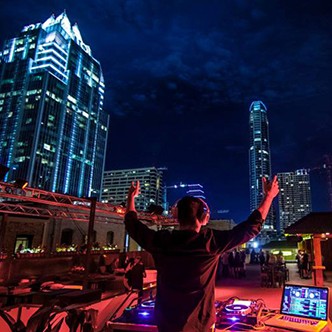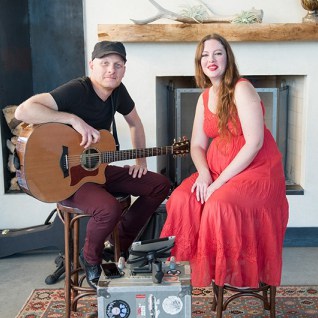How an Idea to Help a Community in Need Steered Toward Creating an Event Planning Division
Introduction
Building brands is not a typical priority of most events and event-planning businesses. Appropriate corporate colors, marketing materials and corporate swag do their part, and the really good events convey an “energy,” or feel, that fits the corporate image, but the typical measurement of a successful event is a seamless one – it meets attendance, fundraising or lead generation goals.
Events come in many shapes. Organizations of all types are familiar with industry trade shows; some, such as trade associations, perform the major undertaking of planning and hosting them. They offer both planners and attendees the opportunity to introduce or augment other brand-building activities. Corporate retreats help build organizational “brand ambassadors” who, if done correctly, will actually perpetuate an organization’s brand in a stable and continuous fashion throughout their interactions with internal and external stakeholders.
Many companies also sponsor charity events — perhaps because the C-suite firmly believes in the cause, or believes it will boost organizational standing in the community. Both are good reasons but, as with any other event, should always be done with brand building firmly in mind.
The Importance of the Personal Brands in the Organization
Many organizations correctly view the organizational brand as a culmination of its identity. What’s missing from that narrow characterization is the concept of “personal branding” as being an integral piece of the overall brand. Each executive should think about his or her personal brand: the image, voice and standards that over time, become recognizable as germane to and a signature of that individual.
By doing so, individuals are able to more aptly align themselves with organizations with similar brand qualities. The advantages to this can include greater job satisfaction (thus perhaps lower turnover) among employees, and a smoother work process. After all, extreme dissension is less likely to emerge in organizations where the corporate identity is harmonious with the personal brands of the individuals within it. It can also create a magnetic pull between the organization and external stakeholders, attracting the attention of like-minded individuals.
But the other reason that personal branding is important is for stakeholder trust. An organization’s audiences are more likely to trust people, than a company. Personal interactions that portray and reflect the corporate brand can do more for an organization that an ad campaign ever could. Those interactions build trust, and rapport – two building blocks of corporate reputation. People don’t want to do business with companies – they want to do business with people.
And that is where events can play a crucial role in building the brand. For what better way to facilitate interactions than through sharing a meaningful experience.
The Case Study
Spring 2015 will go down in infamy for many in Central Texas. Historic floods, seemingly apocalyptic in nature, quite literally swept homes from their foundations and pillars designed to keep them above potential raging waters – some with families still trapped inside.
A few days later, Austin event producer and musician Clayton Corn got a phone call. It was from Thomas Graham, CEO and founder of Crosswind Media & Public Relations. It seems Thomas had been exploring ideas with colleagues on ways to help the flood victims. This was part of Thomas’s personal brand.
The following is Clayton’s personal account of the pieces that led to Flood Aid Texas 2015, and how it propelled Crosswind into using events to help build brands:
Answer The Phone:
The ten o’clock news was all bad. Hard to watch. Two days earlier an apocalyptic storm had swept through central Texas dropping more rain over the course of a few hours than we’d seen in the past two years. Bystanders watched as entire homes and the families within them were swept downstream into oblivion. Some were rescued, some weren’t.
As I watched the anchor droll on from one catastrophe to another, my phone rang. It was a local business leader with whom I’d had brief dealings in the past. He had been having drinks with other colleagues when the topic of ways to help the victims came up.
“Clay! How would you feel about throwing a concert on the banks of Lake Travis to benefit the victims of the floods?” he asked. “I’ve got the LCRA “Yes!” I always say yes … “Great, let’s do it next week!” “No!” Avoid The Pitfalls of an Unrealistic Deadline: Thomas Graham, the man on the other end of this phone call, embodies the go-getting entrepreneur: a fast-paced, ask-questions-later kind of guy – and asking the impossible. The fact is, I knew we’d have the community’s support, but organizing an event that would make any sort of dent in the need that had befallen our neighbors in buckets was going to take a tremendous amount of effort and planning – even though we ran the risk of losing the urgency associated with it by waiting too long. Little did any of us understand the scope of what we had just put into motion, but after another 24 hours of discussion we decided to plan the event for roughly one month from that date and we’d let the other details come into focus as the planning progressed. Seemed reasonable enough … Pick Up the Phone: Help and luck. We were going to need a ton of both. Within a few days, the idea had matured into a full-day music festival with the hope of drawing 10,000-plus patrons and the goal of raising $500,000. Austin, as you might imagine, has a robust music community that collectively jumps at any opportunity to help their fellow man. The problem was that ideas like ours were popping up left and right and artists and their management were getting several calls an hour looking for artists to perform at all of these events. We needed some star power and we needed a real venue. Ray Benson, one of Austin’s preeminent ambassadors, is also a good friend. He was more than happy to pitch in. Once I had landed him and a couple of other big names, I felt the headwinds change to maybe not quite a tailwind, but at least they weren’t approaching gale-force from the other direction. Suddenly, as Ray began calling artists and they began saying yes, it looked like we might actually make this a success. But, it still needed a home. The original idea of having it on the banks of Lake Travis seemed unrealistic given the weather we’d been having — the very reason we were doing what we were doing. Travis County offered an arena parking lot, which gave us enough room but not infrastructure, and the weather was still a factor. The City of Austin offered the Palmer Events Center – logistically friendly in the city’s center, easily accessible and most of all, indoors. Build a Team and Trust Them: The hardest thing for any project manager I’ve ever encountered is to not micro-manage. Let the experts you’ve hired do what they do. It’s a difficult task if the egg is directly aimed at your face should things take a turn. But in our case, we contacted our friends at South By Southwest (SXSW) who organize large-scale events for a living and asked if any of their staff might be interested in helping out. Their enthusiastic YES! still reverberates with me now, as do those of each of the production companies we asked to provide equipment and manpower. What we wound up with was the best industry team any one of us could have hoped to assemble, and most of all they were extremely enthusiastic about what we were trying to accomplish. Plan and Execute: For 34 days straight we were on a 4:00 pm conference call. I still kind of miss them, truth be told, and every day it seemed like we were patching holes in plans from the previous day, but in the end we wound up contributing not just money, but hope to the victims through our partnerships with the Austin Disaster Relief Network and The United Way. At the end of the day we had a concert featuring 36 of Austin’s biggest performers representing genres from hard rock, folk, Tejano and country music play on four stages. There was no competition and no one-upmanship. Everybody came to help their fellow man. We saw roughly 6,500 people walk through the gate and we raised more than $250,000. Perhaps we didn’t reach our stated goal, but we made a huge dent. With more promotion time and opportunities to promote what we were doing, we likely would have achieved or even surpassed our goal, but we also may have lost the momentum among the public that had built around the urgency of the disaster – the urgency we all felt when the idea originally came to light. From the Floodwaters: Because of our work together on Flood Aid TX, I have joined forces with Thomas Graham and Crosswind to launch a new production company – Crosswind Events + Experiences — with a focus on helping the community through focused, high-impact events. I’m not talking about the $300-per-plate, seen-to-be-seen events at the glitziest hotel, trumpeting causes (that many attendees largely ignore every other day of the year); I’m talking about creating an eye-popping event around a cause that’s mutually beneficial to both the charity and your business through good corporate citizenship and authentic community support. It’s amazing what can come out of a pressure cooker. Doing it Correctly In order for events to be successful branding tools, they must be approached strategically. From a public relations standpoint, that means viewing it as another tool in the PR and marketing toolbox. As a tactic, the branding event must: Conclusion By creating experiences, the line between the event and the organization’s brand become blurred. Remember, brands should be felt and create positive feelings. A properly done event can be just the ticket to gaining entry into enviable brand building. -Clayton


